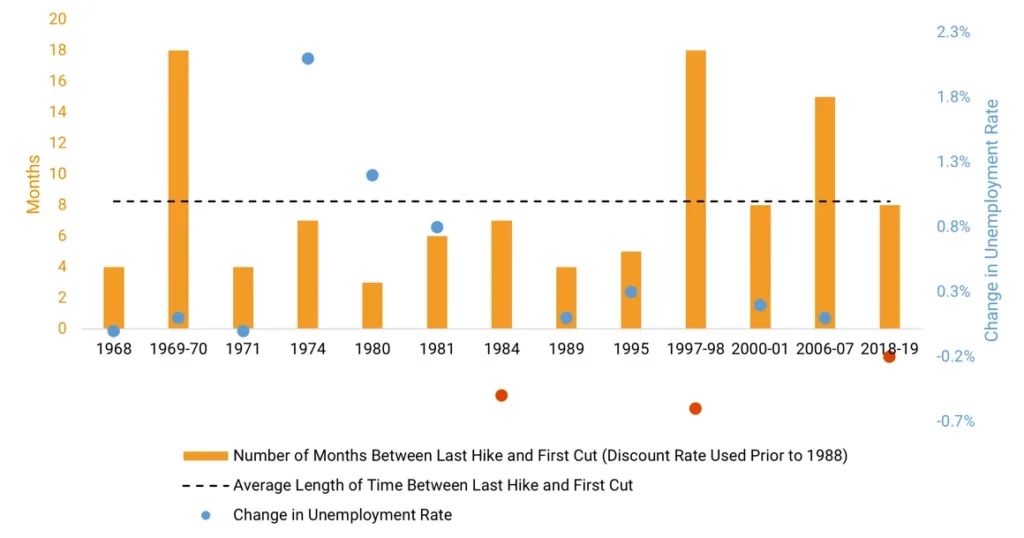
- Last week, the Federal Open Market Committee (FOMC) held the federal funds rate at the existing target range of 5.25% – 5.50%.
- Following the latest jobs report, which showed signs of a cooling labor market, the broad consensus among economists is that the Fed will not raise rates in December, effectively ending the most aggressive hiking campaign in four decades.
- Over the last 13 cycles, the average time between the last rate hike in a cycle and the following first cut is eight months.
- Supposing that the last hike in July represents the final one, history suggests that the Fed may begin lowering rates in March 2024.
- However, a key factor distinguishing the current situation is that inflation remains significantly above the FOMC’s 2% target.
- Markets are currently anticipating rate cuts by late 2024, with more reductions in 2025, but if inflation remains high, it could prompt the Fed to maintain elevated interest rates through 2024, regardless of any significant slowdown in economic indicators.
Source: Helios Quantitative Research, Bloomberg, Federal Reserve, Bureau of Labor Statistics, International Monetary Fund

